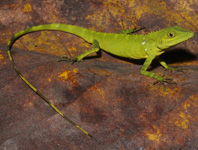Abstract
The male imagoes, larvae, and eggs of Ameletus allengaensis sp. nov. and Ameletus sirotskii sp. nov. from the Russian Far East are described. Based on the structure of the male genitalia, the imago and larvae of A. allengaensis sp. nov. and A. sirotskii sp. nov. are similar to those of A. camtschaticus, but the discovery of these new species and separation from A. camtschaticus were confirmed by studies of the morphology of the larvae and male imago, as well as molecular analysis. Identity of various developmental stages of the new species were confirmed by analysis of the mitochondrial gene cytochrome oxidase 1 (COI) DNA barcode, which was also used to reconstruct the phylogenetic relationships within the genus Ameletus. The intraspecific sequence divergence based on the Kimura-2-parameter (K2P) distance ranged from 0.0–2.5%, whereas the interspecific sequence divergence based on the K2P distance ranged from 6.2–7.9% within A. sirotskii sp. nov., A. allengaensis sp. nov. and A. camtschaticus. Male imagoes of A. allengaensis sp. nov., A. sirotskii sp. nov., and A. camtschaticus can be distinguished by the size and location of small denticles on the ventral plate of the penis. The larvae of A. allengaensis sp. nov. differ from those of A. sirotskii sp. nov. by the size of gills I and II. In A. allengaensis sp. nov., gill I is almost twice as small as gill II; in A. sirotskii sp. nov., gill I is only slightly smaller than gill II. Both new species differ from A. camtschaticus by gill II, which does not have an anal rib on the anal margin.
References
Ball, S.L., Hebert, P.D.N., Burian, S.K. & Webb, J.M. (2005) Biological identifications of mayflies (Ephemeroptera) using DNA barcodes. Journal of the North American Bentological Society, 24, 508–524.
https://doi.org/10.1899/04-142.1
Hebert, P.D.N., Cywinska, A., Ball, S.L. & DeWaard, J.R. (2003) Biological identifications through DNA barcodes. Proceedings of the Royal Society of London Series B-Biological Sciences, 270, 313–321.
https://doi.org/10.1098/rspb.2002.2218
Gattolliat, J.L., Cavallo, E., Vuataz, L. & Sartori, M. (2015) DNA barcoding of Corsican mayflies (Ephemeroptera) with implications on biogeography, systematics and biodiversity. Arthropod Systematics & Phylogeny, 73 (1), 3–18.
Gorovaya, E.A. (2014) Phenology of mayflies (Ephemeroptera, Insecta) of southern Russian Far East. In: Makarchenko, E. (Ed.), Vladimir Ya. Levanidov's Biennial Memorial Meetings, 6, pp. 165–175. [in Russian]
Kluge, N.J. (2007) Review of Ameletidae (Ephemeroptera) of Russia and adjacent lands. Russian Entomological Journal, 16 (3), 245–258.
Kumar, S., Stecher, G. & Tamura, K. (2016) MEGA7: Molecular Evolutionary Genetics Analysis version 7.0 for bigger datasets. Molecular Biology and Evolution, 33 (7), 1870–1874.
https://doi.org/10.1093/molbev/msw054
Mikkelsen, P.M., Bieler, R., Kappner, I. & Rawlings, T.A. (2006) Phylogeny of Veneroidea (Mollusca: Bivalvia) based on morphology and molecules. Zoological Journal of the Linnean Society, 148 (3), 439–521.
https://doi.org/10.1111/j.1096-3642.2006.00262.x
Ogden, T.H., Gattolliat, J.L., Sartori, M., Staniczek, A.H., Soldán, T. & Whiling M.F. (2009) Towards a new paradigm in mayfly phylogeny (Ephemeroptera): combined analysis of morphological and molecular data. Systematic Entomology, 34, 616–634.
https://doi.org/10.1111/j.1365-3113.2009.00488.x.
Ronquist, F. & Huelsenbeck, J.P. (2003) MrBayes 3: Bayesian phylogenetic inference under mixed models. Bioinformatics, 19, 1572–1574.
https://doi.org/10.1093/bioinformatics/btg180
Selvakumar, C., Sivaramakrishnan, K.G. & Janarthanan, S. (2016) DNA barcoding of mayflies (Insecta: Ephemeroptera) from South India. Mitochondrial DNA Part B Resources, 1 (1), 651–655.
https://doi.org/10.1080/23802359.2016.1219623
Sinitshenkova, N.D. & Tshernova, O.A. (1976) New data for the Asiatic species of the genus Ameletus Eaton (Ephemeroptera, Siphlonuridae). Vestnik Moscovskogo Universiteta, 6 (5), 11–19. [in Russian]
Tiunova, T.M. (2013) New species of Ameletus Eaton, 1885 and redescription of Ameletus longulus Sinichenkova, 1981 from the Russian Far East (Ephemeroptera: Ameletidae). Zootaxa, 3630 (3), 519–533.
https://doi.org/10.11646/zootaxa.3630.3.7
Ulmer G. (1927) Entomologische Ergebnisse der schwedischen Kamtcatka-Expedition 1920–1922. 11. Trichoptern und Ephemeropteren. Arkiv för Zoologi, 19 (A), 6, 1–17.
Webb, J.M., Sun, L., McCafferty, W.P. & Ferris, V.R. (2007) A new species and new synonym in Heptagenia Walsh (Ephemeroptera: Heptageniidae: Heptageniinae) based on molecular and morphological evidence. Journal of Insect Science, 7 (63), 1–16.
https://doi.org/10.1673/031.007.6301.
Webb, J.M., Jacobus, L.M., Funk, D.H., Zhou, X., Kondratieff, B., Geraci, C.J., DeWalt, R.E., Biard, D.J., Richard, B., Phillips, I. & Hebert, P.D.N. (2012) A DNA Barcode Library for North American Ephemeroptera: Progress and Prospects. PLoS ONE, 7 (5), 38063.
https://doi.org/10.1371/journal.pone.0038063
Zloty, J. (1996) A revision of the Nearctic Ameletus mayflies based on adult males, with description of seven new species (Ephemeroptera: Ameletidae). Canadian Entomologist, 128, 293–346.
https://doi.org/10.4039/Ent128293-2Zloty, J. & Pritchard, G. (1997) Larvae and adults of Ameletus mayflies (Ephemeroptera, Ameletidae) from Alberta. Canadian. Entomologist, 129, 251–289.
https://doi.org/10.4039/Ent129251-2

